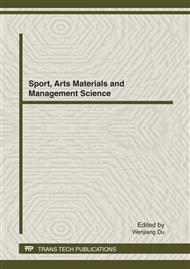p.231
p.237
p.242
p.246
p.252
p.260
p.265
p.269
p.274
Mechanics Transmission and Analysis of the Stress Measurement and Control System of the Fracture Traumatic Cross-Section
Abstract:
In allusion to the measurement and control system of the fracture traumatic cross-section stress, because of the manufacturing error and installation error of its mechanical components, the axial and radial force of the indicating value of the dynamometer exists at the same time, and the radial force will damage the fracture healing. According to the mechanical structure of the measurement and control system of fracture traumatic cross-section stress, analyzed the mechanics transmission, and established the mechanics transfer model of the stress measurement and control system. Based on the force method typical equations, acquired the unknown force and torque of the measurement and control system. Take the radial force of the indicating value of the fracture two-dimensional dynamometer into the mechanics transfer model expression, thus obtain the result of the fracture traumatic cross-section affected by the radial force that applied by the stress measurement and control system, and then adjust the size and direction of the radial force on the fracture trauma section applied by the stress measurement and control system, and reduce the negative effect of the radial force on fracture healing.
Info:
Periodical:
Pages:
252-259
Citation:
Online since:
April 2012
Authors:
Price:
Сopyright:
© 2012 Trans Tech Publications Ltd. All Rights Reserved
Share:
Citation:


